
My joy and sorrow with Leica in Japan
By Boudewijn Klop
Dear Steve Huff,
Your website has been a great inspiration concerning my photography and I would like to share my story with you. It is about Japan, my joy of photography while travelling and my sorrow concerning malfunctioning Leica’s.
I have always been a fan of Japan, but it was not before my first visit to Japan before I became really enthusiastic. That was four years ago and my first travel was short and work related. The sun was shining and the cherry blossoms were in full bloom in Tokyo, but I had to sit insight all day. On the last day the university organized a sightseeing tour for their guests, which was my chance to shoot some cherry blossoms with my Leica M9-P. Unfortunately, rainfall was so heavily that we had to assist each other with umbrellas if someone of the group wanted to take a picture, which gave us some good laughs. It could have been a theme from a Japanese videogame: Cherry Blossoms versus Umbrellas. It was my first and last trip to Japan with a normal functioning Leica.
Photo 1: Ueno Park, Tokyo, Leica M9-P with 50mm Summicron (non-APO)
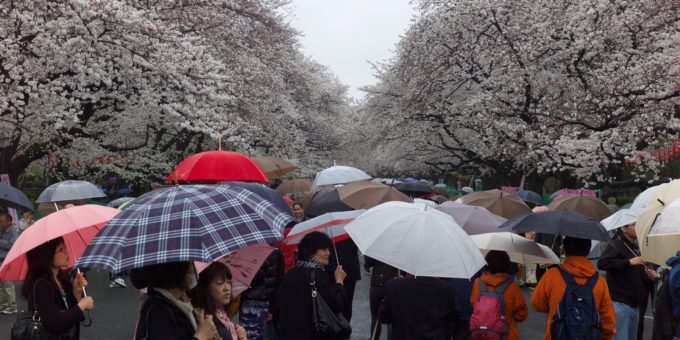
Photo 2: Tokyo, Leica M9-P with 50mm Summicron (non-APO)
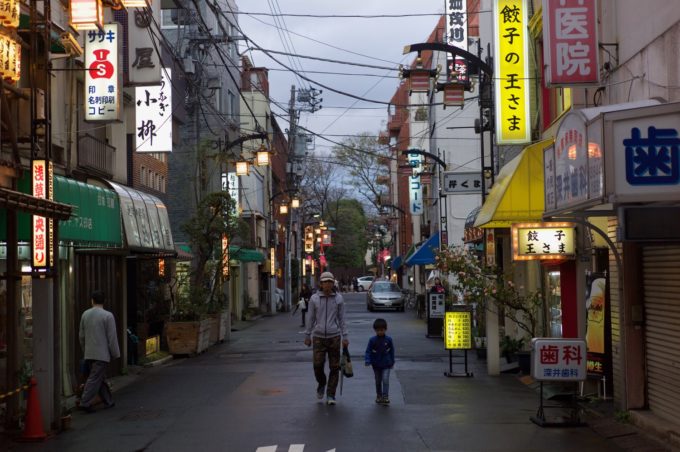
The following year my wife and I decided to visit Osaka and Kyoto during September. Just some weeks before our departure I noticed several ugly spots in my pictures. It turned out that they were due to the widely known sensor corrosion affecting many Leica M9 cameras. My wife was actually very happy when she heard about my M9-P taking a trip back to the factory for repair. She was never a fan of the rangefinder mechanism with manual focus and now we were going to bring our Fuji X100 with us.
Photo 3: Osaka, Fuji X100
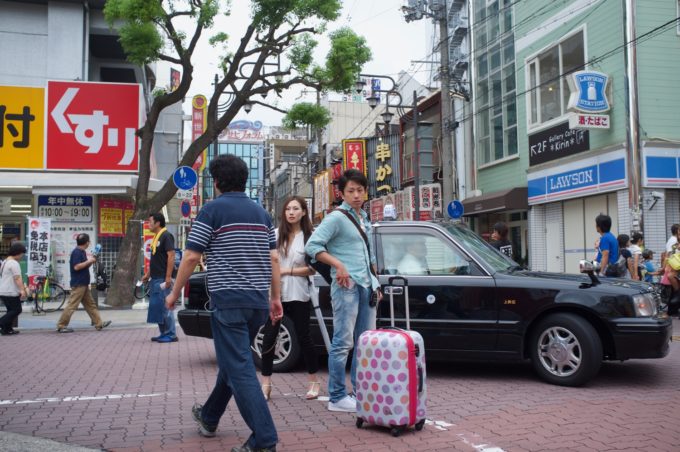
Photo 4: Dotonbori, Osaka, Fuji X100
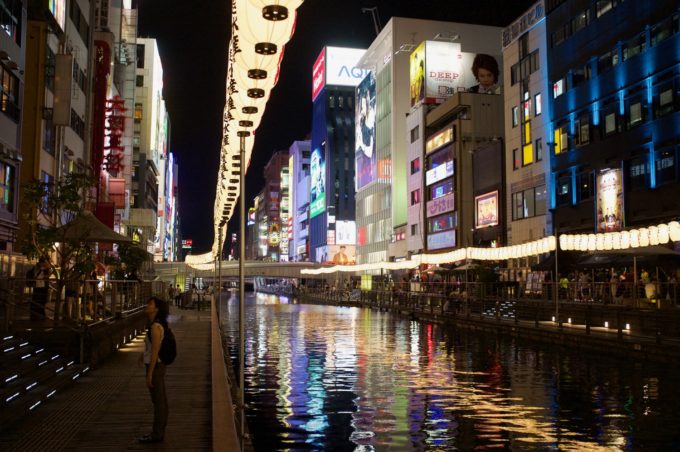
It turned out that we just had a nice, little camera with us, which took some of my most beautiful shots. I am particular fond of the photo of the five hundred year old temple garden Gio-ji in Arashiyama, Kyoto. The picture was accepted as a photo filler in the New England Journal of Medicine. The garden itself is relatively small, but very scenic with its bamboo, maple trees and many different types of moss and is a World Heritage Site.
Photo 5: Gio-ji, Arashiyama, Kyoto, Fuji X100
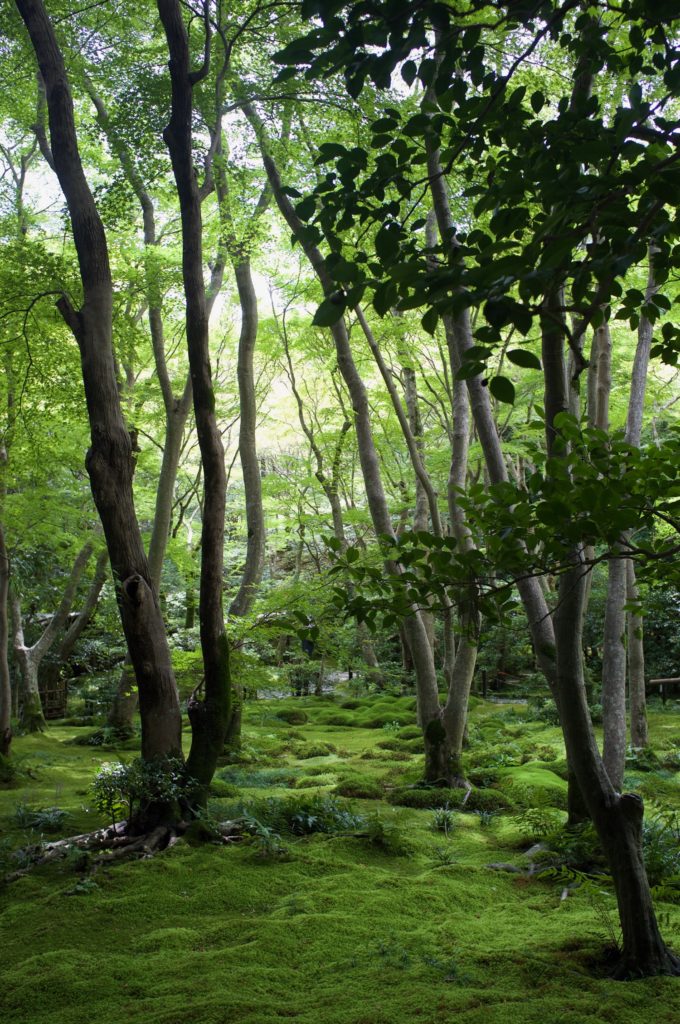
Both my wife and I became in love with Japan and its beautiful nature combined with some Japanese mysticism. The delicious food was another bonus so we decided to visit Japan again next summer. We went to Himeji, Hiroshima, Yamaguchi and Fukuoka and the Leica M9-P with new sensor went with us. I like to print the better pictures from every travel in a photobook for my family. This provides me with the opportunity to print pictures up to 60 x 30 cm, which is joy to look at afterwards. Unfortunately, during our travel I discovered a single red line with a width of exactly one pixel in every picture. It was especially noticeable in the darker pictures with higher iso. Luckily I was able to remove the red line in post-processing where necessary and Leica repaired the camera for free again when we were back home in the Netherlands.
Photo 6: Akiyoshido plateau, Leica M9-P with 35mm Summilux ASPH FLE
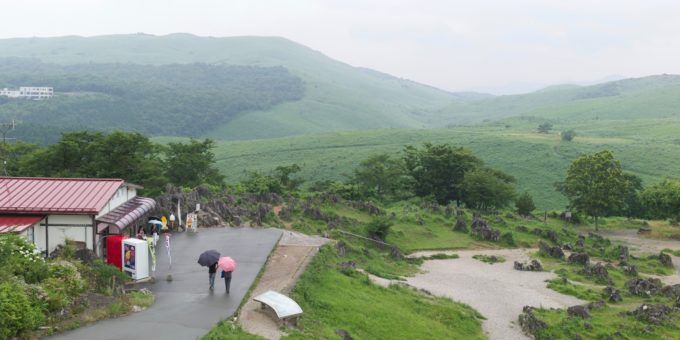
Photo 7: Miyajima, Leica M9-P with 24mm Super Elmar ASPH
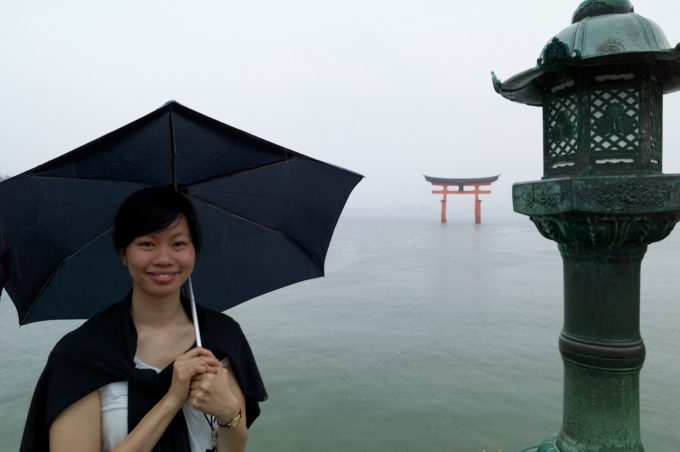
Photo 8: Soft Bank Hawks, Fukuoka, Leica M9-P with 24mm Super Elmar ASPH
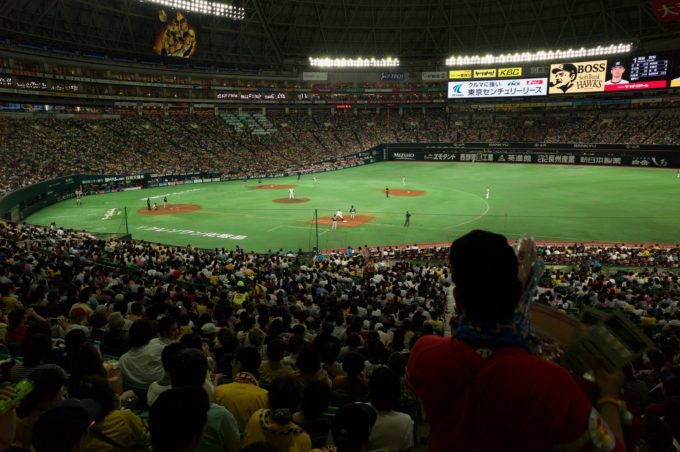
When the Leica M10 was released I decided to upgrade after my M9-P let me down twice. The Leica M10 is such a beautiful digital camera, which can be operated with just manual dials and rings thanks to its additional iso dial. This time we wanted to see the autumn foliage in Central Japan. We packed light and I decided to bring only one lens with us: my favourite 35mm Summilux ASPH FLE. It is perfectly all-round, sharp, has almost no distortion and is a king of the night when necessary. Although you have to be aware that the subject can be separated too much from its background when shooting wide open.
The autumn foliage in Japan is something really dynamic and its peak is dependent on several topographic parameters but also on type of trees. It really is as beautiful as people tell and its beauty is sometimes impossible to capture on a photograph. But after a few days travelling it was time for some tradition. A single dark green line appeared in every picture very similar to the problem with my former M9-P. We decided to visit the Jingo-ji temple northwest from Kyoto to throw of the bad camera karma. Currently, my M10 is at the factory in Germany for repair and I am confident it will be fixed. I have to give credit to my local Leica store in Lisse for providing excellent service with all the technical misery.
Photo 9: Hida Folk Village, Takayama, Leica M10 with 35mm Summilux ASPH FLE
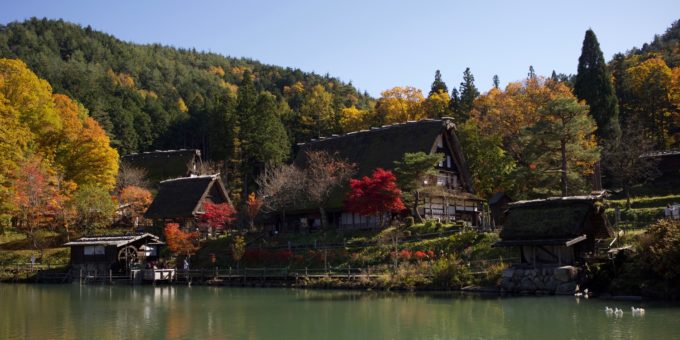
Photo 10: Ainokura, Leica M10 with 35mm Summilux ASPH FLE
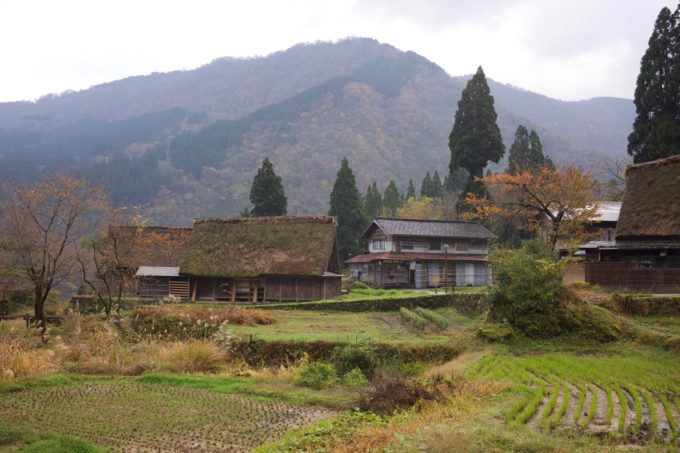
Photo 11: Shirakawa-go, Leica M10 with 35mm Summilux ASPH FLE
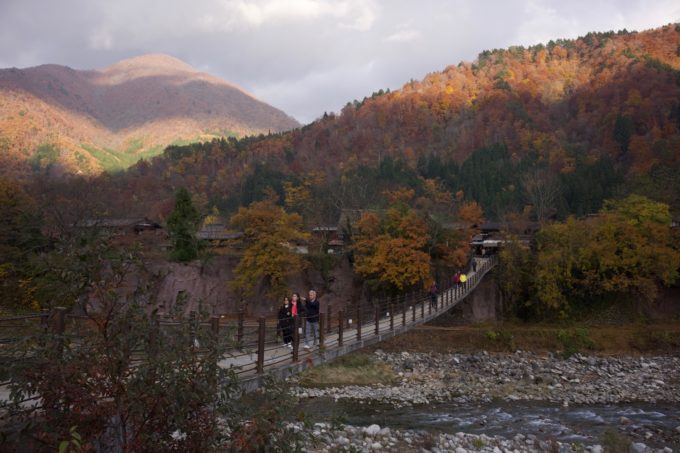
Photo 12: Kenrokuen Garden, Kanazawa, Leica M10 with 35mm Summilux ASPH FLE
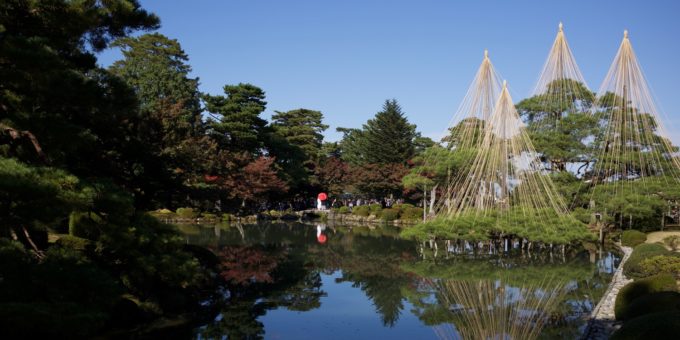
The saying that the best camera is the one you are actually taking with you must be true. Whether it is a Leica M, a Fuji, a camera from any other brand or even a broken camera. We are already fantasizing about another trip to Japan in the future since we have not seen mount Fuji yet. Hopefully, a certain tradition will be broken.
Photo 13: Gio-ji, Arashiyama, Kyoto, Leica M10 with 35mm Summilux ASPH FLE
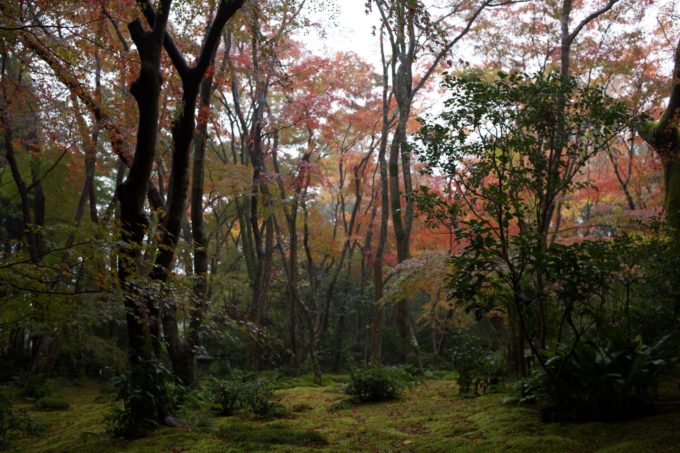


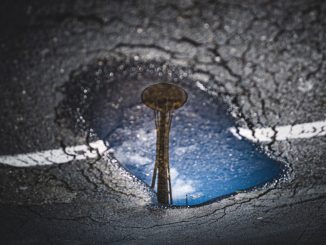

beautiful pictures….for me, Japan is a magical place…every photo i took in film turn out so nice especially in XPan format.I had a film canister malfunction on me, my XPan refused to load Cinestill 800T and that’s when i discover the beauty of Fuji natura 1600.
I owned Canon 350D for 6-7 years before replace by 6D and switching to Olympus EM5MKII for a brief of time, finally to Sony A7RII. Never had any issues with Canon but Sony shut down on me for couple of time during low light shooting.
I have two Leica M’s an M8 and a M240 neither have given any kind of problems ?
I have great sympathy with people who have had issues and hope Leica realise this and are striving to resolve these issues.
Nothing I own -bikes audio equipment shoes etc etc seems to give me the kind of problems that others seem to experience – crazy I know .
The answer is that I am super careful with everything I own because I mostly cannot afford new stuff !
People lend me their cameras and this is how I know other brands better than most. They say if you lend it to him it will be handed back better than it was before.
A fact I have learned – no digital camera is as well made or as robust as the old film cameras like the Nikon F or the Rolleiflex or Hasselblad .
I wish I had my old M6 Leica.
The work I do is no better with digital just more convenient .
I had the same vertical line problem M240 and the sensor corrosion. The line is just a sensor remap problem and should be a user menu option instead of having to send camera in for 6 weeks.
My 1st ever comment after reading Steve’s web for 3 years but didn’t think it would be to talk about cars! I’ve had 2 Range Rovers over 8 years & never a problem with either. Some people are just unlucky (cars or cameras)!
Great post, lovely photos.
Yike$! For the high cost I would assume You get what you pay for.
Back to the Future for my Film RF Leica lens M3-M4 M6 TTL w.
Do I save for a M10 aiming for a BW Monochrome-Sensor ROT.
How to avoid the high cost of Refurb/Repair.
My back up is Fuji X-Pro I shoot with SLR Pentax CAD lens
Most D lens are overpriced. market value Buy used Save.
Thanks for this Steve-Great post.
Leica AG I STILL (pun) Believe in YOU
The Best RF Is YET to arrive 2018
Fabulous photos there! I’ve been playing with the idea of retiring my X-E2 and getting a Leica M typ262 for quite some time now and your experience worries me a bit. My Fujifilm isn’t exactly fault-free but the random card error, aperture ring failure and internal dust sound like nothing compared to your experience.
Great pictures.
We have to be clear : the last best Leica was the M6 classic and the best one M3 and M2. The digital Leica are only luxury marketing lines. I use Sony A7 R2 for digital because Canon and Nikon provide to big camera for me, I like small camera. So my tools are Leica M3 and Sony A7r2.
https://www.eyeem.com/u/saulaire
I had a new Leica M9 for 3 days. The CCD has Dead Pixels. So I gave it back to the store. The Leica lenses are surperb. Aber the cameras… For the price i do expert better quality.
I can only comment my own personal experience with Leica.
I have owned and used the M3, M6, M8, M9, M240, Summilux, Summicron, Elmar, and Summarit lenses and have never had a issue with any of them. I still have the M9 with the original sensor and no corrosion. I suppose the only issue was the M8 IR problem but they sent out the filter so to me no big deal. I talked to a long time Leica dealer and he said about 25% of the M9 they sold came back with sensor problems, maybe just a bad batch beats me.
Several times, I have really thought about a Leica and a nice 50 Summilux. I have no problem with spending top money for a top product, but there are just too many instances, such as this post, (with great pictures!), that have put me off.
At some point, Canon will finally come out with a full frame mirrorless and I’ll buy it, because having used their cameras, sometimes under fairly tough conditions, for 13 years, I have never had a failure of any kind. That counts for a lot.
Lovely pics Boudewijn. There is a very simple answer to your issues. Get a film Leica.
I just picked up an M-A and I do not think I will have sensor issues or system crashing issues with it. Pretty sure of that.
Film. It does a body good.
😉
I had been using Nikon for over a decade, never had a single case of equipment failure, until I got my M Monochrom. Since then I have developed a “love and fear” symptom with Leica. I used to travel with only one camera and a few lenses. Now I have fear to travel with one camera only. Here is only a short list of my Leica equipment problems:
1. Really bad sensor corrosion, as well as vertical black lines (similar issue as mentioned in the post above) of M Monochrom.
2. Dusts on my Q sensor, unbelievable. Had to send in Leica New Jersey for removal.
3. As soon as I arrived in Iceland last Oct, Q went dead.
4. The lens shade of Summilux 50 get stuck and had to send in for repair.
5. The fabric skin of SL came off (over the SD card door).
6. SL 24-90 zoom suck had had to send in for rebuilt.
7. SL EVF constant got moisture fog inside when I am in humid environment.
8. EVF2 (240/246) is dead.
9. APO Summicron 90 makes wired mechanical noise when charging aperture.
10. SL Summilux 50, mystically, the image shown in the EVF is alway wide open and won’t show and DOF change when aperture stops down…still a mystery to me.
11. SL Summilux AF is Stone Age slow.
12. Rangefinder of MM/240/246 all went for calibration repeatedly until I am fed up to send in cameras and wait and wait…
13. There are more cases that I feel reluctant to share…It sounds like that I am a monkey but I am not. I take good care of my tools.
I wish the Mirrorless Nikon would be something like a digital FM2.
Leica can not be the only and trusted wife.
I will chime in and say I have owned a slew of Leica cameras, and sometimes multiples. M8, M9, M9P, M240, MP 240, M10, SL, and others. Only issues I have ever had have been with RF going out of alignment, and they do so quite easily. Many use M’s with RF’s that are slightly off and they never even realize it. They just assume the lenses are not as sharp as they hoped or they are missing focus. Ive tried so many M cameras (digital) that others own and find their RF’s off quite often. THAT to me is a hassle and has been since the M8. I have never had sensor issues, freeze ups, and I feel teh Leica 50 Lux SL AF is quite nice. Snappy and while not something like you get from a Sony A9, plenty fast enough for what the lens is. When I tested it, my only gripe was the size and weight. Gorgeous lens otherwise. Leica has their share of reliability issues from what I read, I just haven’t experienced most of them, luckily.
With introduction of LV in Leica cameras, I always wondered the stingenes of Leica by not providing in camera adjustement of RF done by user.. It`s especially important with f1,4 and f1. They should realise that being deep in Africa or some other remote place, knocked off RF can be disaster.
Honestly, it really is an easy fix for an end-user to fix the RF from the 240 and newer. All you need is a tiny (2mm by memory, but it might be a 1.5mm) hex wrench and a few minutes to fix the horizontal alignment. The vertical alignment is only harder since you have to take off the Leica red dot. (it’s held on by a film of adhesive like you use to assemble mattes) Behind there is another hex screw for the vertical adjustment.
Before the 240 you needed a more specialized tool for the vertical, but the procedure was effectively the same.
A tad misleading and I would not recommend doing this yourself as the chance of making it much worse is high. I used to adjust my own M8, M9 and M 240 and more times than not, made it much worse and had to be sent in anyway. Most who I know who do this or try it end up making it worse as you can screw up close focus or mid distance VERY easily. I never recommend doing this on your own because I have seen so many people try and regret it. When the M’s RF needs adjust, always best to send it in.
One could wonder how it comes a camera like that have such malfunction. The sensor or maybe the battery or the memory storage. Really discouraging. Good people realizing that to surpass the blind admiration.
Beautiful shots
Very, very nice shots Boudewijn. Superb!
Great photos and love this post. This one speaks volumes to me as I’ve owned the same cameras while visiting Japan countless times. Fortunately for me the M9-P has never failed me all these years. I only just got the sensor replaced after hearing the final deadline was coming up. I took an A7S with me to Japan one year as I knew my ISO limitations of the M9. Ironically the tones were so off that I avoided using it whenever possible. The M9P still sits in my bag sometimes but doesn’t get much use. I’m torn between selling it and letting another enjoy it but it’s been so my trusted camera all these years without fail. It was there for the birth of my two children. My wife even got the hang of using the rangefinder in it!
I got the M10 at launch too and have went to amazing Hokkaido this fall. You must visit, I’m sure you’ll love it.
This post reminds me of the agony I felt several years ago after I broke my bank by purchasing a Leica M8. The mystic of Leica had overpowered me and I just had to have one of these iconic marvels for myself. Within a month or so, after taking some lovely pictures, the camera completely crashed and would not turn on. I sent it back to Leica for repair, which took 6 months, as the camera had to go back to Germany. I was so ticked off by the experience, that I sold it the minute I got it back, as I had purchased a Nikon SLR in the interim, which took wonderful pictures, with never a mechanical fault.
I have seen the videos of all those dedicated workers at the Leica factory laboriously hand assembling these wonderful Leicas. However we do need to recognize that the more extensive and complicated the handwork, the more the possibility for error. It pains me to say this because the new Leica M10 is such a work of art and represents an historical tradition in cameras that cannot be duplicated anywhere else. Nevertheless, for those of us who have difficulties reaching for the sky to purchase one of these beauties, the better part of valor might be to be content with a lower cost product from a Japanese manufacturer, where quality control is pristine and picture quality is excellent. Since the 1960’s, I have owned a succession of Pentaxes, Minoltas, Canons, Nikons, Fujis and Sonys and have not had any a thing go wrong with any of them.
Sad tale and as many have discovered Leica not exactly in forefront of reliability .It was simpler with film, Leica M3, M2 and my “guess whats there” M6-TTL. I am going to South Africa/Zuider Afrika in 48 hours
I am taking small compact digital cameras, a few for different results!
A breeze thru security, no worry if lost except images..
Always carry a spare camera or “phone”.
Good Luck next time!
The pix seen very nice.
Beautiful images!
Wow! I enjoyed your pictures and story! Thanks for sharing!
Your photos of Japan are gorgeous. I’ve been five times and the scenery and cities and landscape never get old. On the other hand, I’ve owned Sony, Nikon, Canon, Pentax and Leica digital camera bodies and lenses. The ONLY bodies and lenses I’ve ever had to have repaired are Leica’s. Not sure why. Otherwise I like the images my M’s have produced.
Leicas of today remind me of Range Rovers. Beautiful design and workmanship [at least the workmanship you can visibly SEE], but dead last on reliability and always in the shop for repairs.
To some extent, YMMV, but generally-speaking, digital M bodies haven’t had a great track record for dependability. Brass may look and feel good, but it really has no practical value in the digital era, nor does it make a camera more robust.